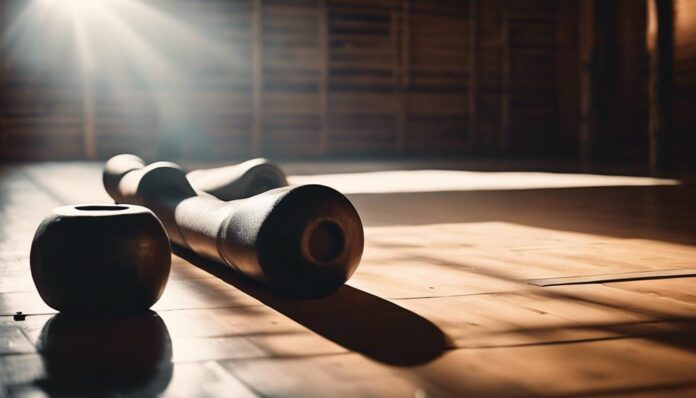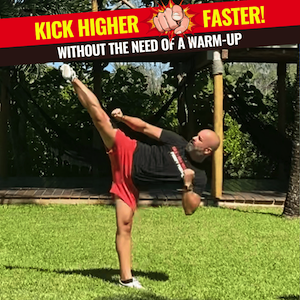As an older martial artist, you can speed up your recovery by incorporating targeted stretches into your routine. Focus on hip flexibility with stretches like the Pigeon Stretch, Lunging Hip Flexor Stretch, and Sumo Squat. For shoulder mobility, try the Scorpion Shoulder Stretch and Over the Shoulder Stretch. Don't forget dynamic warm-ups, such as leg swings and arm circles, to prepare your muscles for training. By targeting these areas, you'll reduce muscle soreness and stiffness, and improve your overall performance. By exploring the specific stretches tailored to your martial art style, you can take your recovery to the next level.
Benefits of Stretching for Recovery
Anyone who's spent years practicing martial arts knows that recovery is just as important as training itself. As you age, your body's ability to bounce back from intense workouts slows down, making it essential to incorporate a stretching routine into your recovery process.
By doing so, you'll not only alleviate muscle soreness and stiffness but also improve flexibility, which is vital for maintaining performance levels.
Regular stretching post-training promotes faster recovery and improved overall mobility by enhancing blood flow to your muscles. This accelerated blood flow delivers essential nutrients and removes metabolic waste products more efficiently, allowing your muscles to repair and rebuild faster.
Additionally, stretching increases the range of motion in your joints, reducing the risk of injuries during training and facilitating quicker recovery from strains.
Common Injuries in Older Martial Artists
As you age, you become more prone to injuries, particularly strains and sprains in your lower back, shoulders, and knees, due to reduced flexibility and muscle strength.
To minimize the risk of injury, it's crucial to understand the causes of common injuries and develop effective prevention strategies, including proper warm-up and stretching routines.
Causes of Common Injuries
While the physical demands of martial arts training remain constant, your body undergoes significant changes with age, increasing the risk of injuries. As an older martial artist, you're more prone to injuries such as strains, sprains, and tendonitis due to decreased flexibility and muscle elasticity.
The following are common causes of injuries in older martial artists:
- Decreased flexibility and muscle elasticity, making you more susceptible to strains and sprains
- Joint instability, particularly in the knees and hips, leading to an increased risk of falls and injuries during training
- Age-related wear and tear on ligaments and tendons, resulting in chronic pain conditions such as tendinopathy
- Reduced bone density, increasing the risk of fractures, especially in high-impact martial arts practices
To mitigate these risks, it's important to prioritize recovery strategies, including stretching exercises. By incorporating flexibility exercises into your routine, you'll improve your range of motion and reduce the likelihood of injuries.
Additionally, focusing on recovery techniques will help you manage the physical demands of martial arts training, ensuring you can continue to practice and improve your skills. Regular stretching exercises are vital for injury prevention and recovery.
Injury Prevention Strategies
Frequently, older martial artists experience common injuries that can be debilitating and impact their training. To mitigate this risk, you can implement injury prevention strategies that focus on flexibility, stretching, and strengthening key muscle groups.
As you age, your flexibility and muscle elasticity decrease, making you more susceptible to strains in the hamstrings and lower back. Regular stretching, particularly for the hip flexors and hamstrings, can greatly reduce the risk of lower body injuries.
Proper warm-up routines, including dynamic stretching, can enhance blood flow to muscles and prepare your body for the physical demands of martial arts. Strengthening your core and glutes through resistance training can also support joint stability and improve overall body mechanics, reducing injury risk.
When stretching, it's crucial to listen to your body and avoid overstretching, as older martial artists may experience slower recovery times and increased sensitivity to injuries.
Effective Recovery Techniques
Numerous older martial artists experience common injuries that can hinder their training and overall well-being. As you age, your flexibility and recovery time decrease, making you more prone to strains, sprains, and tendonitis.
To combat this, incorporating gentle passive stretching techniques into your recovery routine can greatly improve your recovery by promoting blood flow and muscle relaxation.
- Engage in dynamic warm-ups followed by targeted static stretches to reduce muscle stiffness and enhance recovery post-training sessions.
- Utilize foam rollers and self-myofascial release techniques to alleviate muscle soreness and improve mobility.
- Incorporate stretches that target your hip flexors and hamstrings, such as the Pigeon Stretch and Scorpion Shoulder Stretch, to prevent injuries and minimize recovery time between workouts.
- Make dynamic stretching a part of your routine, as it helps maintain flexibility and range of motion, reducing your risk of injury.
Essential Stretches for Hip Flexibility
As you focus on enhancing your martial arts performance, increasing hip flexor mobility is essential for maintaining a full range of motion and preventing injuries.
To improve flexibility in this area, you'll want to incorporate targeted exercises into your stretching routine.
Increasing Hip Flexor Mobility
With age, hip flexor mobility becomes increasingly important for martial artists, as it directly affects the ability to execute high kicks and maintain overall mobility.
As you incorporate hip flexor stretches into your routine, you'll notice significant improvements in your flexibility and range of motion. Regular stretching of the hip flexors can also help alleviate lower back pain, which is especially beneficial for older martial artists who may experience stiffness and discomfort.
To increase hip flexor mobility, focus on the following stretches:
- Leg swings: Dynamic stretches that target the hip flexors and improve flexibility.
- Lunging hip flexor stretch: A static stretch that targets the hip flexors and improves range of motion.
- Pigeon Stretch: Effectively targets the hip flexors and helps improve flexibility, aiding in recovery and performance.
- Consistent practice of hip flexor stretches: Leads to long-term improvements in flexibility, reducing injury risk and enhancing recovery times after training sessions.
Exercises for Flexibility Improvement
Five essential stretches can help improve hip flexibility in older martial artists.
You'll target tight hip flexors with the Lunging Hip Flexor Stretch, which is important for maintaining mobility and preventing injuries. By performing the Pigeon Stretch, you'll alleviate lower back pain while improving hip flexibility, allowing for better kicking techniques and overall movement.
The Sumo Squat Stretch is another important exercise, enhancing mobility in your ankles, knees, hips, and lower back. This full-range motion is necessary for older practitioners to maintain best performance.
Although the Saddle Stretch isn't exclusively focused on hip flexibility, it engages multiple muscle groups, greatly improving overall flexibility – crucial for recovery and performance in martial arts.
Lastly, you'll benefit from regularly practicing the Standing Hamstring Stretch, which increases flexibility in your hamstrings, reducing the risk of injuries and aiding in faster recovery.
By incorporating these stretches into your routine, you'll experience noticeable improvements in your hip flexibility, enabling you to perform at a higher level and recover more efficiently.
Consistency is key, so make these essential stretches a staple in your training regimen. With time and dedication, you'll reap the rewards of enhanced flexibility and improved overall performance.
Stretching Techniques for Improved Mobility
Mobility is a critical component of martial arts training, and incorporating effective stretching techniques into your routine can make all the difference.
As an older martial artist, you can improve your flexibility and support muscle recovery by using passive stretching techniques like the Pigeon Stretch and Saddle Stretch. These stretches allow your muscles to relax and elongate effectively.
To enhance your mobility, incorporate the following stretching techniques into your routine:
- Use foam rollers to target specific muscle groups, alleviate tightness, and promote faster recovery by breaking down muscle knots and improving blood circulation.
- Perform dynamic stretches like leg swings and torso twists to enhance blood flow and prepare your muscles for activity.
- Stretch your hip flexors and hamstrings through lunging hip flexor stretches and seated hamstring stretches to improve your kicking ability and overall mobility.
- Engage in regular flexibility routines, combining static and dynamic stretches to reduce recovery time and enhance your overall performance.
Importance of Dynamic Warm-Ups
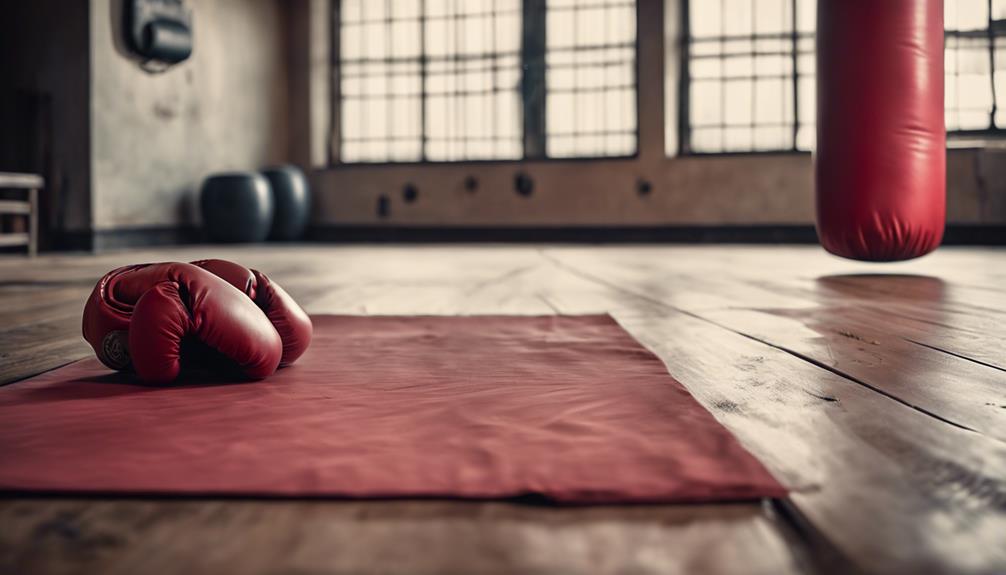
As you refine your stretching techniques to improve mobility, incorporating dynamic warm-ups into your routine becomes a natural next step.
Dynamic stretches play an essential role in preparing your body for physical activity, particularly in martial arts. By increasing blood flow and enhancing muscle elasticity, dynamic warm-ups reduce the risk of injury and improve overall performance.
Engaging in dynamic warm-ups facilitates neuromuscular readiness, allowing for quicker muscle activation and smoother shifts into intense training. This is especially beneficial for older martial artists who may experience longer recovery times.
Unlike static stretches that focus on fixed flexibility, dynamic stretches promote flexibility and mobility through active movements like leg swings, arm circles, and torso twists.
Studies have shown that incorporating dynamic stretching into warm-up routines can lead to better performance metrics, such as sprint speed and vertical jump.
By targeting multiple muscle groups, dynamic warm-ups help improve coordination, reduce the risk of injury, and enhance overall martial arts performance.
As you incorporate dynamic warm-ups into your routine, you'll experience the benefits of improved neuromuscular facilitation and enhanced muscle elasticity, leading to faster recovery and better overall performance.
Stretching Routines for Specific Martial Arts
Frequently, older martial artists overlook the importance of tailoring their stretching routines to their specific style of martial arts. As you train in your chosen discipline, it's vital to incorporate stretches that target the muscle groups you use most. This will help you maintain flexibility and recover faster from intense training sessions.
You can enhance your flexibility and alleviate pain by incorporating the following stretches into your routine:
- Pigeon Stretch: alleviates lower back pain and enhances hip flexibility, important for martial artists to maintain mobility.
- Over the Shoulder Stretch: relieves shoulder tension, beneficial for those engaging in cardio kickboxing or similar disciplines.
- Sumo Squat: enhances mobility in key areas such as the ankles, knees, hips, and lower back, supporting older martial artists in executing techniques with greater ease.
- Saddle Stretch: promotes overall flexibility and aids in recovery for martial artists who may experience stiffness with age.
Overcoming Age-Related Flexibility Loss
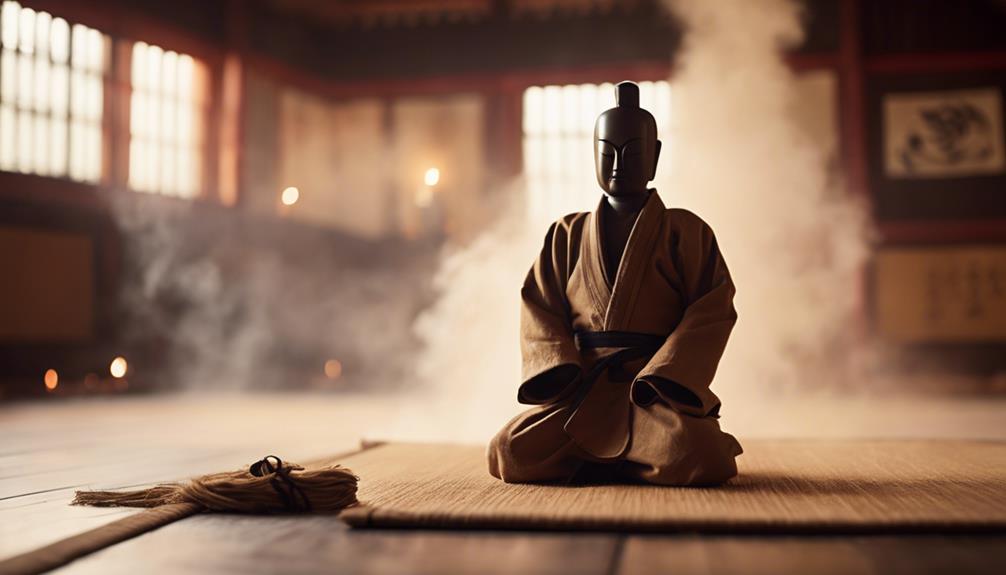
Your stretching routine plays a vital role in maintaining flexibility, but age-related changes can still affect your mobility. As you age, your flexibility typically decreases due to muscle stiffness and reduced elasticity.
To counteract this, it's important to incorporate a daily stretching routine, including passive stretching techniques. This is especially important for martial artists over 40, as regular stretching can greatly enhance flexibility and aid recovery.
Targeted stretches can alleviate tightness in key muscle groups, such as hip flexors and lower back, which are essential for effective martial arts performance. Incorporate stretches like the Pigeon Stretch and Sumo Squat into your routine to improve flexibility.
Additionally, dynamic stretching before training sessions can enhance range of motion and prepare muscles for action. This helps you maintain your kicking and movement abilities as you age.
Regular flexibility-enhancing exercises, such as the Saddle Stretch and Over the Shoulder Stretch, can counteract age-related stiffness and contribute to better overall recovery post-training.
Effective Stretching for Shoulder Mobility
Shoulder mobility is a critical component of martial arts performance, and effective stretching techniques can help maintain or even improve range of motion in this area. To enhance your shoulder mobility, you'll want to focus on stretches that target the shoulders and pectoral muscles.
Some essential stretches to incorporate into your routine include:
- Over the Shoulder Stretch: alleviates shoulder tension and improves mobility
- Scorpion Shoulder Stretch: targets shoulders and pectoral muscles to promote flexibility
- Arm circles and swings: dynamic stretches that prepare the muscles for movement and enhance range of motion
- Cat-Cow pose: a yoga-inspired stretch that improves shoulder mobility while enhancing overall body awareness and stability
Regular static stretching of the shoulder muscles after training can also aid in recovery by promoting blood flow and reducing muscle tightness, which minimizes soreness.
Managing Recovery Time With Stretching
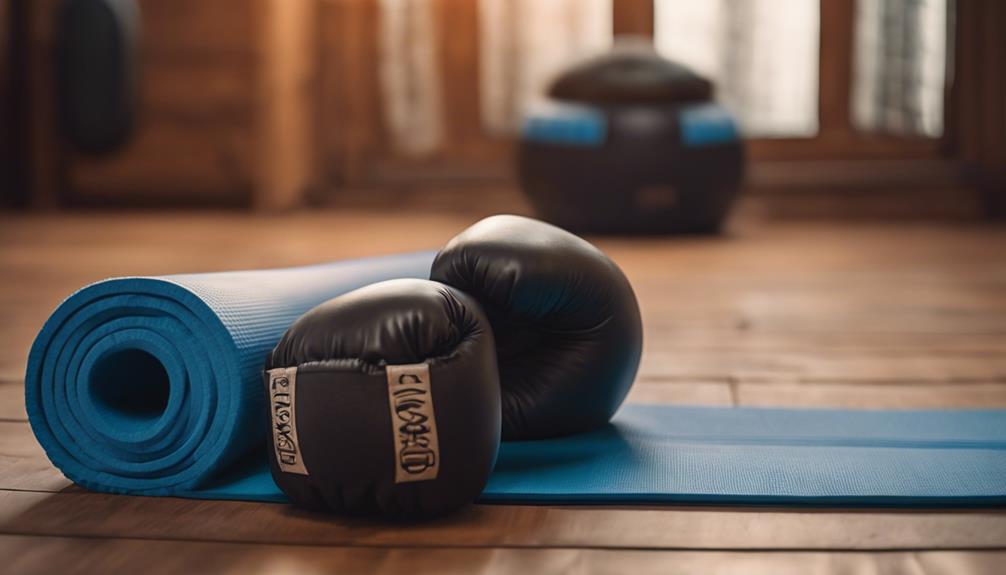
As you age, managing recovery time becomes an increasingly important aspect of martial arts training. Incorporating stretching into your recovery routine can greatly reduce muscle soreness and stiffness, allowing you to bounce back faster after training sessions.
By focusing on stretching for martial arts, you'll enhance your recovery process and improve overall flexibility.
Passive stretching techniques, such as holding stretches for extended periods, promote muscle relaxation and increase blood flow to targeted areas. Regular flexibility training also helps maintain mobility and joint health, reducing the risk of injuries and the time needed for recovery.
After workouts, stretching aids in muscle elongation and helps clear metabolic waste from the muscles, which is essential for efficient recovery as the body ages.
In Summary
As you cool down from a rigorous martial arts session, your muscles scream for relief. You bend and stretch, lengthening your limbs like a slow-motion unfold of a carefully crafted origami. Your breath synchronizes with each movement, unknotting tense tissues. With deliberate focus, you execute a sequence of stretches tailored to your discipline, wrapping your body in a soothing balm of relaxation. Your recovery accelerates, priming you for the next intense training session.


